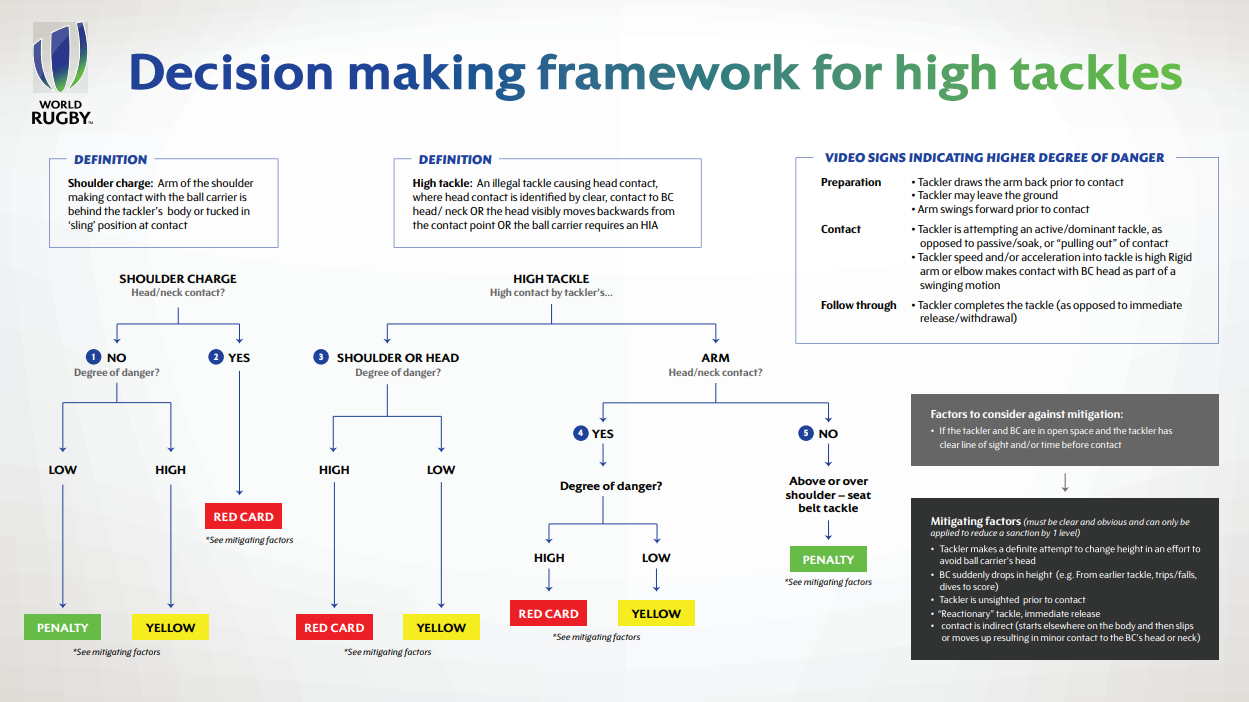
A brief summary of the matters covered by the decision tree are as follows:
Definition: A ‘high tackle’ is an illegal tackle causing head contact, where ‘head contact’ is identified as clear, direct contact to the ball carrier’s head or neck OR the head visibly moves backwards away from the contact point.
Definition: A shoulder charge is where the arm on the shoulder side making contact with the ball carrier is held behind the tackler’s body or is tucked in the ‘sling position’ at the moment of contact.
Some matters that a referee should be watching for are as follows.
In the tackler’s preparation for the tackle:
- The tackler and ball carrier are in open space and the tackler has a clear line of sight and time to set up the tackle at the correct height,
- The ball carrier is running at a consistent height and is not dropping in height prior to contact,
- the tackler’s arm is moved backwards prior to contact,
- the tackler jumps off the ground,
- the tackler’s arm swings forward prior to contact.
At the point of contact:
- the tackler is attempting an active/dominant tackle as opposed to a passive ‘soak of the force of the tackled player’ or is ‘pulling out’ of the tackle,
The tackler’s speed and/or acceleration into the tackle is high when a rigid arm or elbow makes direct contact with the ball carrier’s head or neck as part of a swinging motion.
On the follow through:
- The tackler completes and carries through with the tackle as opposed to an immediate release or withdrawal of contact.
Consideration of the above matters will contribute to the referee’s interpretation of the tackler’s intentions and the outcomes.
Situations in which a red card to the tackler may be appropriate are as follows:
- A shoulder charge resulting in direct head/neck contact with force,
- A high tackle with the shoulder or head resulting in direct head/neck contact with force and with a high degree of danger.
- A high tackle with an arm resulting in direct head/neck contact with force and with a high degree of danger.
Referees should always remember that there are mitigating circumstances that need to be taken into account. These can be applied to mitigate the sanction down from the award of a red card. These are summarised as follows:
- The tackler makes a definite attempt to change the height of his/her tackle in an effort to avoid the ball carrier’s head/neck,
- The ball carrier suddenly drops in height as a result of an earlier tackle, a trip or fall, or a dive to score.
- The tackler is unsighted prior to contact.
- The tackler makes a ‘reaction tackle’ and an immediate release.